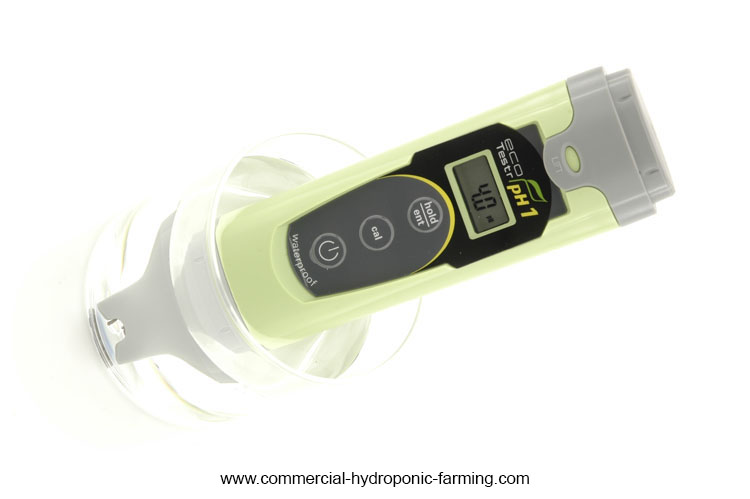How to adjust the pH in hydroponic nutrient solutions
Adjusting ph of the water supply is crucial for maximum nutrient availability. It is seldom that the water supply, even from a well, is perfectly suitable (pH 5.8-6.8). The pH always needs some adjustment, either up or down.
How to decrease the pH of a nutrient solution
Lowering the pH is the most common adjustment to nutrient solutions. That is because most waters are alkaline, with a pH of at least 7.2 or above. The pH of the nutrient solution should not be allowed to rise above 6.8 or decrease below 5.8. If the solution pH needs to be adjusted manually, it should be measured at least twice a day, especially some hours after a new nutrient solution has been added to the nutrient tanks. There are five acids that can be used to adjust the pH down:
- nitric acid
- phosphoric acid
- sulphuric acid
- citric acid and
- acetic acid.
The most common acids used to lower the pH in hydroponic nutrient solutions are phosphoric acid and nitric acid. It is important to have a water analysis available in order to determine which acid would be suitable for the water being used. Nitric acid is preferred when using water with high calcium concentrations since relatively more phosphoric acid will be required in order to adjust the pH. If very little calcium is in the water very little acid will be required to decrease the pH of the water. The following reactions take place when there is calcium in the water:
Ca(HCO3)2 + 2HNO3 = Ca(NO3)2 + CO2 + 2H2O
Ca(HCO3)2 + 2H3PO4 = Ca(H2PO4)2 + 2CO2 + 2H2O
The Important difference between using nitric acid and phosphoric acid in waters that contain calcium is that nitric acid produces calcium nitrate (CaNO3), carbon dioxide (CO2) and water (H2O). In the case of phosphoric acid calcium phosphate (Ca(H2PO4)2) is produced which as no nutritional value to the plant since it is insoluble in water. The nutritional loss is the phosphorus that is not available to the plant which could be used. The amount of phosphoric acid used and the precipitate that forms should not be of any concern. It is not enough to cause any damage to pumps or filters.
Acetic acid is that safest acid to use to decrease pH. However it is not as strong as the other, so much more volume would be required to reduce the pH of the water by the same amount as the other acids.
When mixing concentrated solutions of acid to water it is important to remember the following. Always add the acid to large amounts of water. Never add the acid first into a container and then add water. In the later case the solution temperature can increase so fast that it can explode cause serious damage.
How to Increase the pH of a nutrient solution
When the water supply has a pH below 5.8 a base should be added to the water. The most common base available is potassium hydroxide (KOH). Other chemicals can also be used such as sodium hydroxide (NaOH) and bicarbonate of soda or baking soda (NaHCO3). Baking soda is the safest to use. Both KOH and NaOH can burn skin if not washed of immediately. Potassium hydroxide is available in pellets which make handling the product very safe and easy. In order to make a 10% solution of KOH, take 100g of KOH pellets and add to 900ml of water. The solution can be added to the nutrient tank until the pH of the water, without any nutrients added, is between 5.8 and 6.8.



